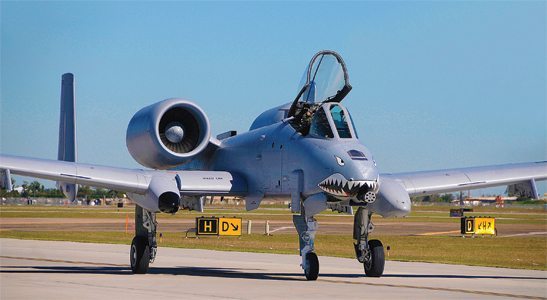Centennial Series: Arizona Military Milestones
The military has played an enormous role in shaping the first 100 years of Arizona’s history.
Here are some of the Arizona military personalities, places and things that have left their mark on the state’s history:
Lori Piestewa (1979-2003)
Piestewa was the first Native American woman to die in combat for the United States military and the first woman in the U.S. armed forces killed in the 2003 invasion of Iraq. She was a member of the 507th Maintenance Company whose unit was ambushed. Piestewa was awarded the Purple Heart and Prisoner of War Medal. The army posthumously promoted her from Private First Class to Specialist. Arizona’s state government renamed Squaw Peak in as Piestewa Peak in her honor.
Pat Tillman (1976-2004)
The former Arizona Cardinals football player died while serving in the U.S. Army’s 75th Ranger Regiment in Afghanistan. The Pat Tillman Foundation was established in his honor to support veterans and their families by providing resources and scholarships. Before joining the Cardinals, Tillman was an ASU graduate and star player for the Sun Devils.
Ira Hayes (1923-1955)
Pima Indian Ira Hayes of Sacaton was a World War II soldier in the U.S. Marine Corps. He is one of the six flag raisers depicted in the Iwo Jima Memorial in Washington D.C. The Ira Hayes Memorial Park in Sacaton was established in his honor.
Barry Goldwater (1909-1998)
During WWII, Goldwater joined the U.S. Air Force as a pilot assigned to the Ferry Command, a unit that flew aircraft and supplies globally. He flew overseas between the U.S. and India, later contributing to the development of the United States Air Force Academy. He remained in the reserves after the war and retired as a command pilot with the rank of Major General. The Barry M. Goldwater Range in Yuma was named in his honor.
John McCain
The U.S. Senator served 22 years in the military after graduating from the U.S. Naval Academy. He became a naval aviator, flying ground-attack aircraft from aircraft carriers. During the Vietnam War, he was almost killed in the 1967 USS Forrestal fire. In October 1967, while on a bombing mission over Hanoi, he was shot down, seriously injured, and captured by the North Vietnamese. He was a prisoner of war until 1973, and was beaten and denied adequate medical treatment. McCain retired from the Navy in 1981, and was awarded the Silver Star, Bronze Star, Legion of Merit, Distinguished Flying Cross and the Purple Heart.
USS Arizona (BB-39)
 Launched June 19, 1915, the USS Arizona was the second and last of the Pennsylvania class of “super-dreadnought” battleships. Arizona served stateside during World War I. The ship is mostly remembered because of its sinking, with the loss of 1,177 lives, during the Japanese attack on Pearl Harbor on December 7, 1941, the event that provoked the United States into entering World War II. A memorial was dedicated May 30, 1962 as part of the Pacific National Monument.
Launched June 19, 1915, the USS Arizona was the second and last of the Pennsylvania class of “super-dreadnought” battleships. Arizona served stateside during World War I. The ship is mostly remembered because of its sinking, with the loss of 1,177 lives, during the Japanese attack on Pearl Harbor on December 7, 1941, the event that provoked the United States into entering World War II. A memorial was dedicated May 30, 1962 as part of the Pacific National Monument.
Navajo Code Talkers
They participated in every assault the U.S. Marines conducted in the Pacific from 1942-1945. Navajo code talkers served in all six Marine divisions, transmitting messages in a code that the Japanese were unable to break. The complexity of the Navajo language made for an ideal and indecipherable code.
Bushmasters
The “Bushmasters” of the South Pacific was the Arizona National Guard unit that gained fame in WWII. It battled Apache Indians, Spaniards, Germans and Japanese over a 102-year period. The group was originally formed from a collection of five companies that defended Arizona territory from Apache Indians.
Military technology
 Arizona has made a name for itself when it comes to innovation in military technology. The Apache Longbow, produced by Boeing in Mesa, is the world’s most advanced combat helicopter. Lockheed Martin in Goodyear is a global company that provides aerospace technology worldwide. The manufacturing and integration of spacecraft hardware, software and ground-support equipment is provided by Spectrum Astro, located in Gilbert. Raytheon Missile Systems in Tucson is awarded military contracts worth millions of dollars annually. General Dynamics C4 Systems in Scottsdale routinely earns military communications contracts, also in the millions of dollars.
Arizona has made a name for itself when it comes to innovation in military technology. The Apache Longbow, produced by Boeing in Mesa, is the world’s most advanced combat helicopter. Lockheed Martin in Goodyear is a global company that provides aerospace technology worldwide. The manufacturing and integration of spacecraft hardware, software and ground-support equipment is provided by Spectrum Astro, located in Gilbert. Raytheon Missile Systems in Tucson is awarded military contracts worth millions of dollars annually. General Dynamics C4 Systems in Scottsdale routinely earns military communications contracts, also in the millions of dollars.
Military bases
Air Force
Luke Air Force Base 
Located in Maricopa County, Luke employs more than 8,000 personnel and covers 4,200 acres. It is home to the largest fighter wing in the world, the 56th Fighter Wing. It is also the largest and only active-duty F-16 Fighting Falcon training base in the world.
Davis-Monthan Air Force Base
Located in Tucson, Davis-Monthan Air Force Base is home to the A-10 Thunderbolt II, more commonly known as the “Warthog.” The A-10 was used in combat for the first time during the Gulf War in 1991, destroying more than 900 Iraqi tanks, 2,000 military vehicles, and 1,200 artillery pieces.
Williams Air Force Base
This former base in Mesa allowed more than 26,500 men and women to earn their wings. It broke ground for its Advanced Flying School on July 16, 1941. Williams Air Force Base closed in 1993, resulting in the loss of $300 million in annual economic activity. It reopened in 1984 as a regional, commercial airport known as Phoenix-Mesa Gateway Airport.
Army
Fort Huachuca
Home of the U.S. Army Intelligence Center and U.S. Army Network Enterprise Technology Command in Sierra Vista, Fort Huachuca was declared a national landmark in 1976. It is the headquarters of the Army Military Affiliate Radio System, Joint Interoperability Test Command and Electronic Proving Ground.
Marines
Yuma Marine Corps Air Station
This air station specializes in air-to-ground aviation training for U.S. and NATO forces. In 1990, almost every Marine that participated in Operations Desert Shield and Desert Storm trained at Yuma. The Tactical Aircrew Combat Training System was added to provide realistic combat training electronically.
Arizona Business Magazine November-December 2011




